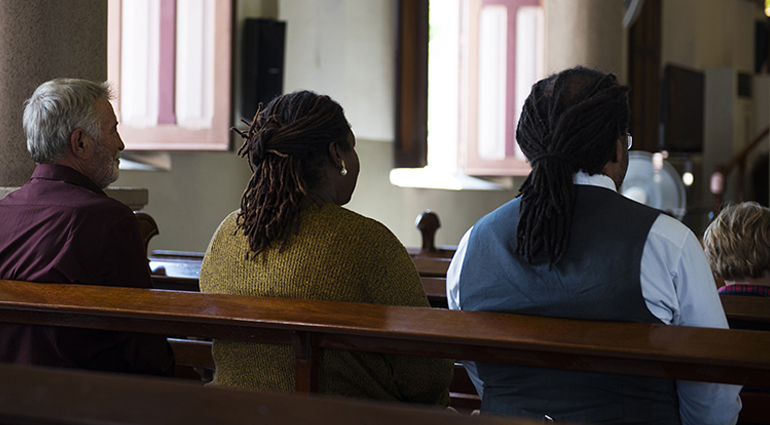We Would See Jesus
They came to Philip . . . with a request. “Sir,” they said, “we would like to see Jesus.” John 12:21
As I looked down at the pulpit where I was sharing prayers at a funeral, I glimpsed a brass plaque bearing words from John 12:21: “Sir, we would see Jesus” (
John’s gospel recounts how after Jesus rode into Jerusalem (see John 12:12–16), some Greeks approached Philip, one of the disciples, asking, “Sir, . . . we would like to see Jesus” (v. 21). They were probably curious about Jesus’s healings and miracles, but as they weren’t Jewish, they weren’t allowed into the inner courts of the temple. When their request was passed along to Jesus, He announced that His hour had come to be glorified (v. 23). And by that, He meant that He would die for the sins of many. He would fulfill His mission to reach not only the Jews but the Gentiles (the “Greeks” in verse 20), and now they would see Jesus.
After Jesus died, He sent the Holy Spirit to dwell in His followers (14:16–17). Thus as we love and serve Jesus, we see Him active in our lives. And, amazingly, those around us too can see Jesus!
Lord Jesus Christ, I am humbled and amazed that You would come and live in me. Help me to share this amazing gift with those I meet today.
INSIGHT
At first glance, it might appear that Jesus brushes off the Greeks who requested to see Him. But characteristically, His indirect reply points to a far more profound reality. Jesus is explaining the significance of what will happen to Him later that week. First He says, “The hour has come for the Son of Man to be glorified” (John 12:23), a reference to His death and resurrection for the salvation of the world—including the Greeks. Then He uses the metaphor of wheat to describe Himself and His mission. William Hendriksen points out the significance of the kernel of wheat in the context of the approaching Passover celebration. The seed must die before it can grow into a wheat stalk, producing many more seeds that will be made into bread—bread that will be eaten at Passover. Jesus (the Bread of Life) would have to die to produce “many seeds” (v. 24). And anyone who wants to serve Jesus must hate their life in this world (v. 25)—in other words, die to self.
Am I willing to die to self in order to serve the One who died for me? Will I do what is necessary to “see Jesus”?


